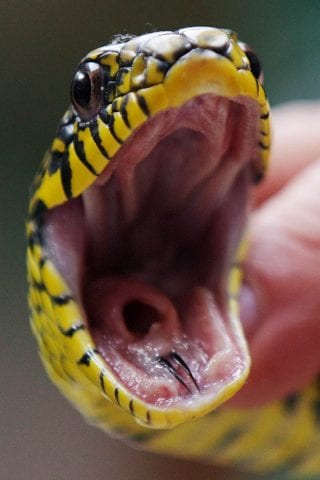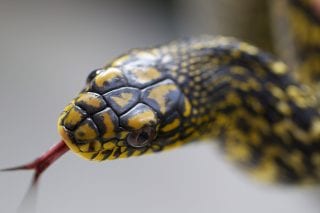Fun facts
Stinky snake
The King ratsnake is sometimes known as ‘stink snake’ or ‘stinking goddess’ because they give out a strong foul-smelling odour when threatened.
Name
Their common name, King ratsnake comes from the fact that they eat other snakes.
Subspecies
There are three recognised subspecies of King ratsnakes.


